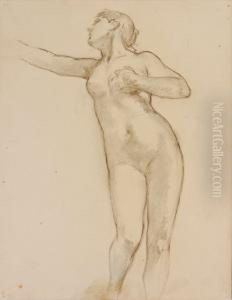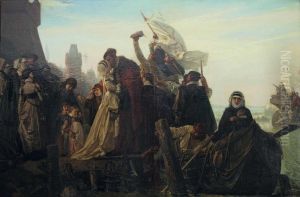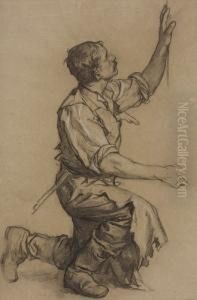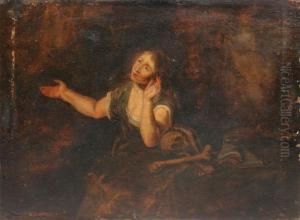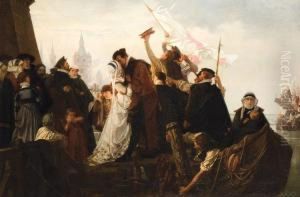Ferdinand Pauwels Paintings
Ferdinand Pauwels was a Belgian painter, born on January 26, 1830, in Ekeren, which is now a district of Antwerp. He was a prominent figure in 19th-century European art, widely recognized for his contributions to historical painting and his role as an influential art educator.
Pauwels began his art education at a very young age in the Antwerp Academy of Fine Arts, which was noted for its high standards and rigorous training. He showed extraordinary talent and was awarded several prizes during his tenure there. His early success earned him scholarships, which allowed him to further his studies abroad. He moved to Paris, where he studied under the historical painter Hippolyte Delaroche, a prominent artist known for his dramatic and elaborate historical scenes.
In 1852, Pauwels traveled to Rome, which was a traditional part of an artist’s education at the time. The rich history and art of Italy had a profound impact on him and helped shape his style. He absorbed the works of the Italian masters and began to develop his own approach to historical painting, characterized by meticulous attention to detail and a strong narrative element.
After spending several years in Italy, Pauwels returned to Belgium, where he began to establish himself as a successful painter. He received various commissions for historical and religious works, and his paintings were well received by both critics and the public.
Pauwels' career took a significant turn when he was invited to become a professor at the Royal Academy of Fine Arts in Dresden, Germany. His teaching at Dresden had a lasting impact on the development of the art scene in Germany, and he became one of the most respected and influential art educators of his time. Pauwels was known for his liberal teaching methods, which allowed students to develop their own styles rather than strictly adhering to academic norms.
Throughout his career, Pauwels remained active as a painter, participating in numerous exhibitions and receiving accolades for his work. He became known for his large-scale historical canvases, which often depicted scenes from Belgian history, imbued with a sense of romantic nationalism.
Ferdinand Pauwels’ contribution to art was not limited to his own paintings; his legacy also includes the generations of artists he trained and influenced during his tenure as a professor. His students carried his teachings and style into their own varied careers, spreading his influence across Europe. Pauwels retired to Vorderbrühl, near Vienna, where he continued to paint until his death on May 26, 1904.
